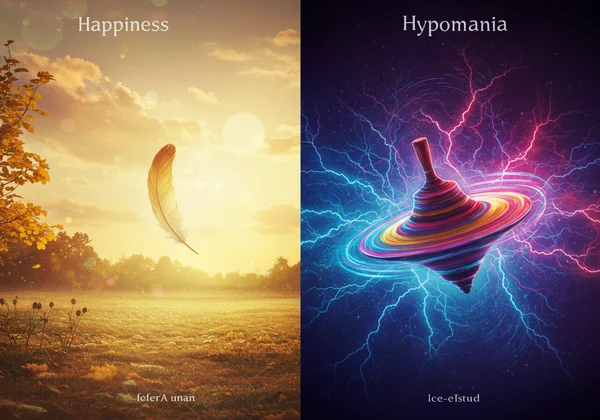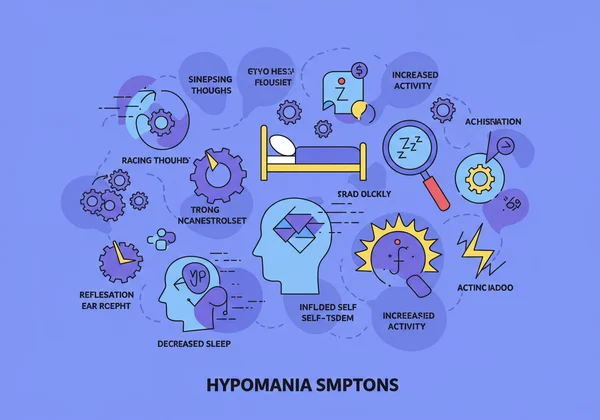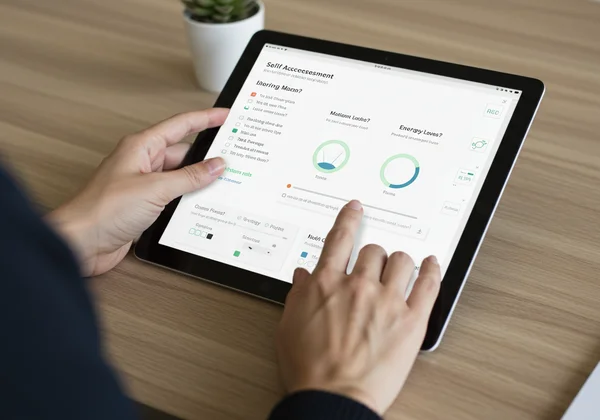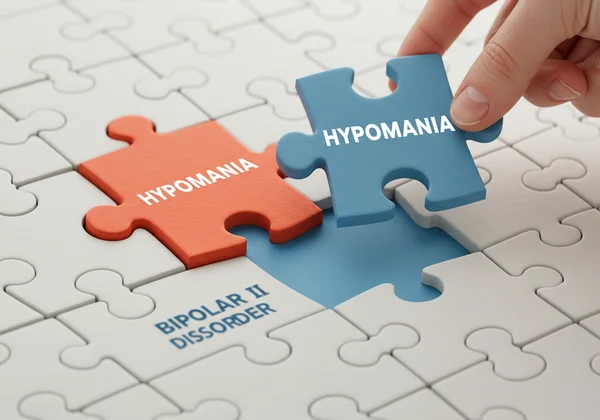BSDS: Hypomania vs. Happiness – Identifying Bipolar Symptoms
Ever feel an incredible surge of energy, a wave of productivity so intense you feel on top of the world? For many, it's just a great day. But what if that elevated state isn't just happiness? Sometimes, a prolonged and intense high could be a sign of hypomania, a key symptom of the bipolar spectrum. Understanding this crucial difference is the first step toward clarity about your mental health. This article explores the distinction between happiness and hypomania and reveals how the BSDS (Bipolar Spectrum Diagnostic Scale) offers valuable insights.
Distinguishing between a healthy, elevated mood and a clinical symptom is a vital step in understanding your emotional landscape. By exploring these differences, you can better identify patterns and seek support. A great starting point is to start your BSDS assessment and see how your experiences align with established criteria.

What Exactly is Hypomania? Understanding the Elevated Mood
Hypomania is often described as a less severe form of mania. It's a period of elevated mood, increased energy, and heightened activity that is noticeably different from a person's usual state. Unlike full-blown mania, hypomania doesn't typically cause major impairment in social or occupational functioning and doesn't involve psychotic features. However, it represents a distinct shift in mood and behavior that can have significant impacts on a person's life and relationships.
Defining Hypomania: More Than Just Being Happy or Energetic
While happiness is a positive emotional response to life events, clinical hypomania is a mood state characterized by specific criteria. It's not just feeling good; it's a persistent state of elevated or irritable mood that lasts for at least four consecutive days. This mood is accompanied by a noticeable increase in energy and activity. The key here is the departure from your baseline self—friends and family often notice the change, even if you just feel exceptionally "good" or productive. This shift is a core component that tools like the BSDS are designed to explore.
Common Hypomania Symptoms and Their Real-Life Manifestations
The experience of hypomania can vary, but it often includes a cluster of specific symptoms. Understanding these signs is crucial for recognizing a potential episode. Here are some of the most common hypomania symptoms:

- Inflated Self-Esteem or Grandiosity: Feeling unusually confident, talented, or powerful. This might manifest as taking on a huge project you're not qualified for or believing you have a special insight.
- Decreased Need for Sleep: Feeling rested and energetic after only a few hours of sleep (e.g., 3 hours), night after night.
- More Talkative Than Usual: Talking rapidly, jumping from one idea to another (flight of ideas), and finding it hard to let others speak.
- Racing Thoughts: Your mind feels like it's going a mile a minute, with thoughts coming so quickly it's hard to keep track.
- Distractibility: Your attention is easily pulled from one thing to another, making it difficult to focus on a single task.
- Increase in Goal-Directed Activity or Agitation: A surge in activity at work, school, or socially. This could mean starting multiple new projects, cleaning the house overnight, or becoming intensely involved in a new hobby.
- Excessive Involvement in Activities with High Potential for Painful Consequences: This includes engaging in impulsive behavior such as unrestrained shopping sprees, foolish business investments, or uncharacteristic sexual indiscretions.
Hypomania vs. Happiness: Key Differences for Self-Reflection
On the surface, hypomania can be mistaken for a period of intense joy and productivity. Many people even enjoy the feeling. However, there are fundamental differences between a healthy state of happiness and the clinical state of hypomania. Recognizing them is essential for understanding your mental well-being.
The Subtle Line Between Normal Elevated Mood and Clinical Hypomania
The line can be subtle. Happiness is typically linked to a cause—a promotion, time with friends, or achieving a goal—and feels congruent with your life. Hypomania, however, can feel disconnected from reality. The elevated mood is often disproportionate to positive events or may arise for no clear reason. The energy of hypomania often has a frantic, pressured quality, while the energy of happiness feels more grounded. The BSDS self-assessment includes questions designed to help parse these subtle differences.
Distinguishing Hypomania from Full-Blown Mania
It's also important to understand the difference between hypomania vs mania. While they share similar symptoms, mania is far more severe.
- Severity: Hypomania is a noticeable change but doesn't typically disrupt your ability to work or maintain relationships. Mania causes significant impairment and may require hospitalization to ensure safety.
- Duration: A hypomanic episode must last at least four days, while a manic episode lasts at least one week (or any duration if hospitalization is needed).
- Psychosis: Hypomania does not involve psychotic symptoms like delusions or hallucinations. Mania can.
- Impact: Mania is a hallmark of Bipolar I Disorder, while hypomania (along with depressive episodes) is characteristic of Bipolar II Disorder.
How the BSDS Helps Pinpoint Hypomania-Related Symptoms
Navigating these complex mood states alone can be confusing. That's where a validated screening tool comes in. The Bipolar Spectrum Diagnostic Scale (BSDS) is a scientifically developed self-assessment designed to identify symptoms and traits associated with the bipolar spectrum, including hypomania. It provides a structured way to reflect on your experiences.
Specific BSDS Questions Designed to Identify Hypomanic Traits
The BSDS doesn't just ask if you feel "happy." It delves into the specific behaviors and internal experiences linked to hypomania. It contains questions that explore periods where you may have experienced a decreased need for sleep, racing thoughts, increased talkativeness, and impulsive actions. By asking you to consider these specific mood shifts over your lifetime, the assessment helps create a clearer picture that goes beyond a simple mood log.

Understanding Your BSDS Score in the Context of Mood Elevation
After completing the assessment on our platform, you receive a preliminary score. This score isn't a diagnosis, but it is a powerful piece of information. A higher score may suggest that your experiences with an elevated mood align with characteristics commonly found on the bipolar spectrum. This objective data can validate your feelings and serve as an excellent starting point for a conversation with a healthcare professional. You can gain deeper insights by taking the free screening today.
The Importance of Recognizing Hypomania in Bipolar II Disorder
Recognizing hypomania is particularly crucial because it is the defining feature of Bipolar II Disorder. Many people with Bipolar II seek help for their depressive episodes, which are often more painful and disruptive, while their hypomanic episodes go unnoticed or are dismissed as simply "good moods."
Why Hypomania is a Defining Feature for Bipolar II Diagnosis
A Bipolar II Disorder diagnosis requires at least one hypomanic and one major depressive episode. Without identifying hypomania, a person might be misdiagnosed with unipolar depression. This distinction is critical because treatments for bipolar and unipolar depression differ greatly. Recognizing bipolar 2 symptoms, especially hypomania, is key to an accurate diagnosis and effective treatment.

Early Signs of Hypomania to Watch For in Yourself or Others
Being aware of the early signs of hypomania can lead to quicker intervention and better management. Look out for these changes:
- A sudden and sustained burst of creative energy.
- Needing significantly less sleep without feeling tired.
- Becoming more social, outgoing, and flirtatious than usual.
- Taking on multiple large projects at once.
- Speaking faster and jumping between topics.
- Increased irritability or agitation.
If these patterns sound familiar, using our validated BSDS tool can provide a structured way to evaluate these experiences.
Unlocking Clarity: Your Next Steps
Understanding the difference between happiness and hypomania is more than an academic exercise—it's a profound act of self-awareness that can lead to better mental health. Hypomania is not just "being extra happy"; it's a distinct clinical state with specific symptoms and implications, especially as a key indicator of Bipolar II Disorder.
Recognizing these signs in yourself or a loved one is the first, most crucial step. You don't have to navigate this uncertainty alone. The Bipolar Spectrum Diagnostic Scale (BSDS) was created to bring clarity to these confusing experiences. It provides a confidential, science-backed framework to help you understand your mood patterns.
Ready to take the next step? Take the free, private BSDS self-assessment now. Gain the insights you need to start a more informed conversation with a healthcare professional and begin your journey toward understanding and balance.
Frequently Asked Questions About Hypomania and the BSDS
What exactly is hypomania, and how does it feel different from happiness?
Hypomania is a clinical mood state lasting at least four days, characterized by elevated energy, a decreased need for sleep, racing thoughts, and often impulsive behavior. Unlike happiness, which is usually a reaction to positive life events, hypomania can occur without a clear trigger and feels more intense and "pressured." The key difference is the departure from your typical self.
How accurate is the BSDS in helping to identify potential hypomanic episodes?
The BSDS is a scientifically validated and reliable screening tool designed to detect symptoms across the bipolar spectrum, including hypomania. While highly accurate for screening purposes, it is not a diagnostic instrument. Its purpose is to identify patterns that warrant further discussion with a qualified medical professional.
Can the BSDS test definitively diagnose me with Bipolar II disorder?
No. It is crucial to understand that the BSDS is a screening tool, not a diagnostic test. A definitive diagnosis can only be made by a qualified healthcare professional, such as a psychiatrist or psychologist, after a comprehensive clinical evaluation. The results from the BSDS screening are an excellent resource to bring to that appointment.
What are the main signs someone might be experiencing hypomania?
The main signs include a distinct period of elevated or irritable mood, a decreased need for sleep while feeling energized, being much more talkative or having racing thoughts, and an increase in goal-directed or impulsive activities. A noticeable change from the person's usual behavior is the most telling indicator.